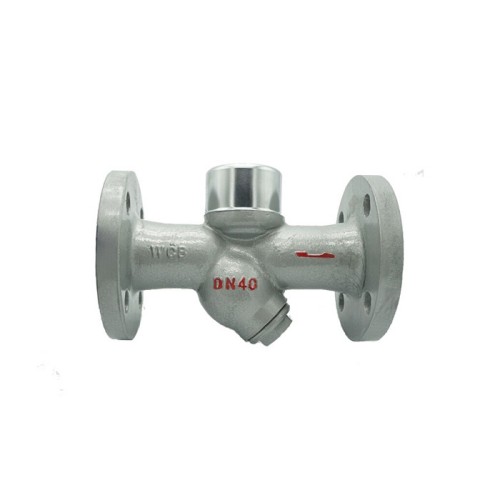Durable Stainless Steel Ball Valve for Robust Fluid Control Applications
Understanding Stainless Steel Ball Valves Applications, Benefits, and Selection Criteria
Stainless steel ball valves are an essential component in various industrial applications due to their durability, reliability, and excellent resistance to corrosion. These valves have become increasingly popular in sectors such as oil and gas, water treatment, chemical processing, and food and beverage industries. In this article, we will explore the features, applications, benefits, and criteria for selecting stainless steel ball valves.
What is a Stainless Steel Ball Valve?
A ball valve is a type of quarter-turn valve that uses a hollow, perforated, and pivoting ball to control the flow of fluid. The ball is positioned between two seats, and when the valve is opened, the ball rotates to allow fluid to pass through. When closed, the ball serves as a barrier, preventing any flow. Stainless steel ball valves are made from stainless steel, primarily due to the metal's excellent mechanical properties and resistance to corrosion, heat, and oxidation.
Key Features of Stainless Steel Ball Valves
1. Durability Stainless steel is known for its strength and longevity, making it an ideal material for valves used in harsh environments. These valves can withstand high pressures and extreme temperatures.
2. Corrosion Resistance Stainless steel exhibits a remarkable resistance to rust and corrosion, which is crucial for applications involving water, chemicals, or harsh environments. This quality extends the lifespan of the valve and reduces maintenance costs.
3. Tight Seal The design of ball valves allows for a secure seal when closed, minimizing the risk of leakage and ensuring reliable service.
4. Quick Operation As quarter-turn valves, stainless steel ball valves can be opened or closed quickly, which is essential for systems that require rapid response times.
5. Versatility Stainless steel ball valves are available in various sizes, designs, and configurations, making them suitable for a wide range of applications.
Applications of Stainless Steel Ball Valves
1. Oil and Gas In the oil and gas industry, these valves are used to regulate the flow of oil, gas, and drilling fluids in pipelines and processing plants.
2. Water Treatment Ball valves are commonly used in water treatment facilities to control the flow of water through various stages of treatment processes.
stainless steel ball valve 1

4. Food and Beverage In food processing, stainless steel ball valves meet hygiene standards and are resistant to contaminants, making them ideal for controlling the flow of liquids and gases in production lines.
5. HVAC Systems These valves are used in heating, ventilation, and air conditioning systems to control fluid flow and improve energy efficiency.
Advantages of Using Stainless Steel Ball Valves
1. Cost-Efficiency While the initial investment may be higher than other materials, the durability and low maintenance requirements of stainless steel can result in significant cost savings over time.
2. Ease of Maintenance The simple design of ball valves facilitates easy maintenance and replacement, contributing to reduced downtime in industrial operations.
3. Smooth Operation The design of the stainless steel ball and seats allows for smooth operation, reducing wear and tear over the valve's lifespan.
Criteria for Selecting Stainless Steel Ball Valves
1. Material Grade Consider the grade of stainless steel based on the application's specific requirements. Common grades include 304 and 316, with 316 offering better corrosion resistance.
2. Pressure and Temperature Ratings Ensure that the selected valve can handle the pressure and temperature conditions of the application.
3. Connection Type Choose the appropriate connection type (flanged, threaded, or welded) based on the needs of the piping system.
4. Size and Flow Capacity Determine the right size for the valve to match the flow rate requirements of the system.
5. Certifications For specific industries, ensure that the chosen ball valve meets relevant industry standards and certifications for safety and quality.
Conclusion
Stainless steel ball valves are a vital component in many industries, offering durability, corrosion resistance, and reliable performance. Their unique features make them suitable for a diverse range of applications. By understanding the advantages and essential selection criteria, industries can effectively leverage these valves to enhance operational efficiency and reliability. As technology advances, stainless steel ball valves will continue to play a crucial role in modern industrial processes.
-
3-types-of-check-valves-maintenance-tipsNewsAug.23,2025
-
ball-valves-types-with-trunnion-mounted-designNewsAug.23,2025
-
butterfly-valve-company-production-capabilitiesNewsAug.23,2025
-
fisher-globe-valve-technical-specificationsNewsAug.23,2025
-
types-of-gaskets-for-flanges-selection-guideNewsAug.23,2025
-
wedge-gate-valve-suppliers-quality-standardsNewsAug.23,2025
-
Breakthrough in Domestic Low Temperature Valve Technology in ChinaNewsAug.18,2025




